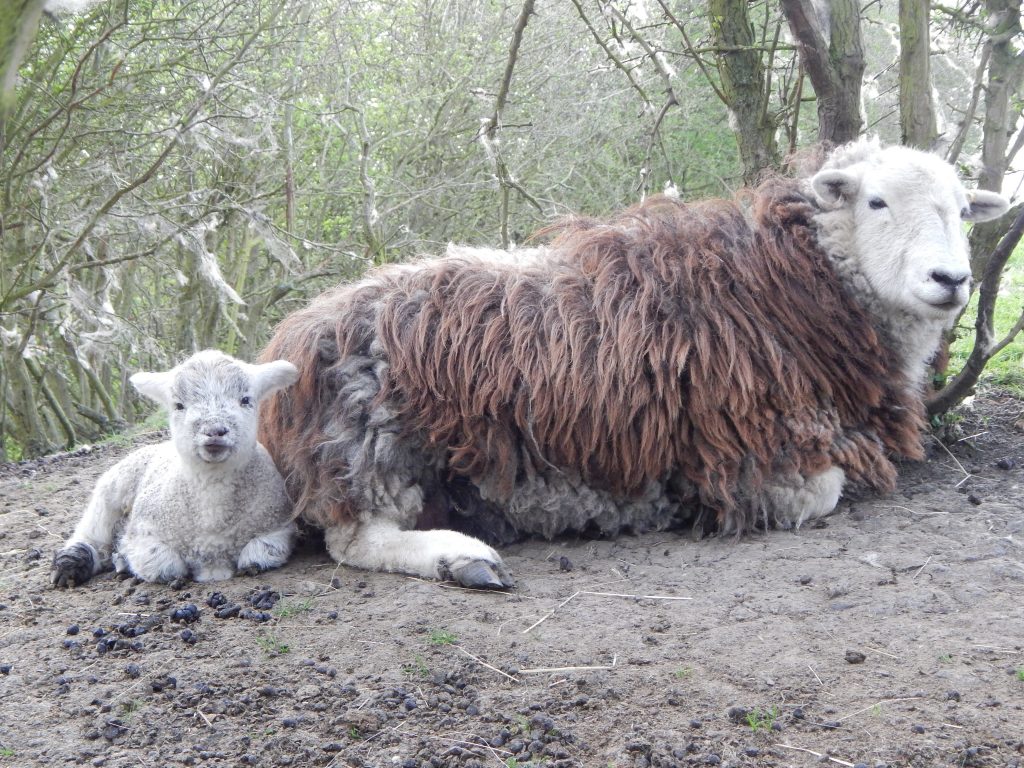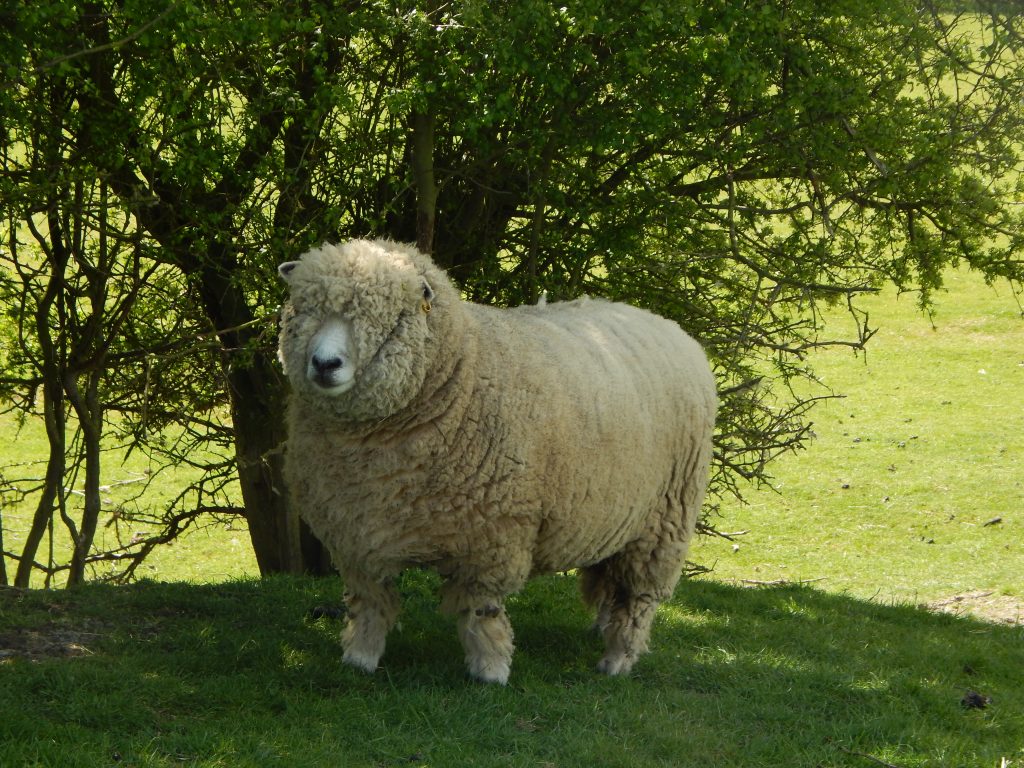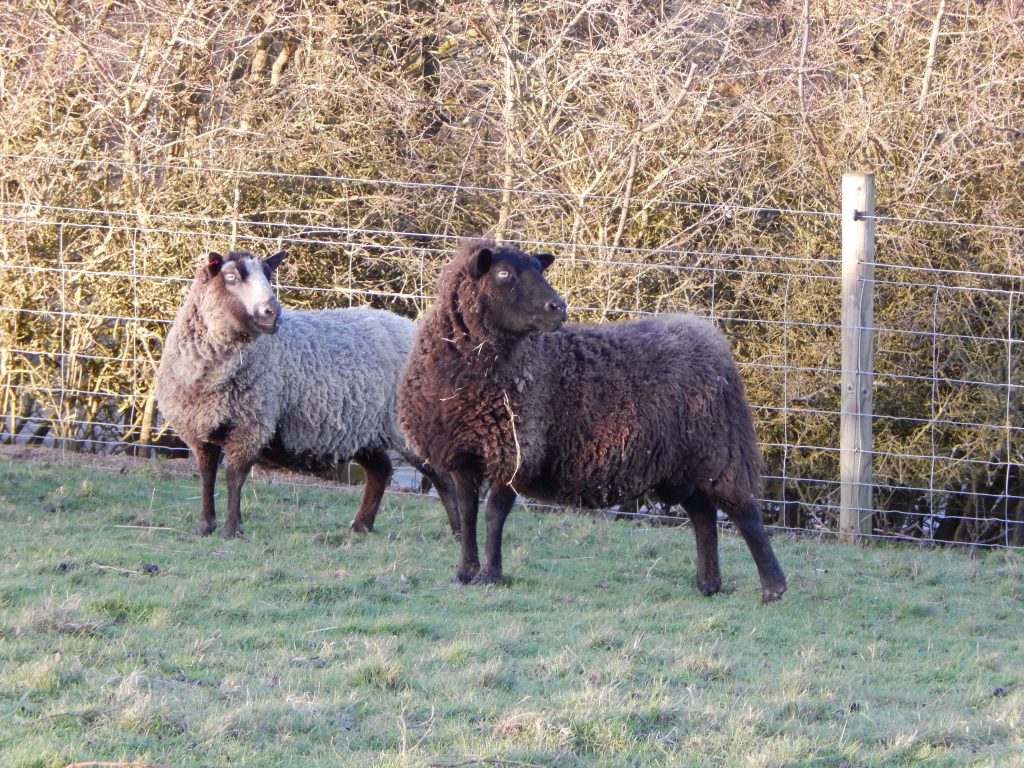Herdwick
The Herdwick is a breed of domestic sheep native to the Lake District of Cumbria in North West England. The name “Herdwick” is derived from the Old Norse herdvyck, meaning sheep pasture. Though low in lambing capacity and perceived wool quality when compared to more common commercial breeds such as Merino sheep, Herdwicks are prized for their robust health, their ability to live solely on forage, and their tendency to be territorial and not to stray over the difficult upland terrain of the Lake District. It is considered that up to 99% of all Herdwick sheep are commercially farmed in the central and western Lake District.
The wool quality of a Herdwick has unique qualities relating to durability. Thick bristle type fibres will often protrude from garments forming a protective barrier layer in blizzards — most likely the same qualities that protect the sheep in similar conditions. They have been known to survive under a blanket of snow for three days while eating their own wool.
A Herdwick’s grey fleece is not easily dyed, and is coarse, and so is best suited to use as carpet wool. The wool is also an excellent natural insulator; it is possible to buy sheets of fireproofed wool to fit as loft insulation.
This slowly maturing breed is one of the most hardy of all the British hill sheep breeds, withstanding the cold and relentless rain of the Lake District at heights upwards of 3,000 feet (about 1,000 metres).
We are reducing our other breeds and mainly concentrating on Herdwicks. We find them very easy to manage for the smallholder. In our experience they also lamb easily with few problems. They are excellent mothers and produce plenty of milk for the lambs.
Ryelands
The Ryeland is one of the oldest English sheep breeds going back seven centuries when the monks of Leominster in Herefordshire bred sheep and grazed them on the rye pastures, giving them their name. It was introduced into Australia in 1919 and are classified as an endangered breed by the Rare Breeds Trust of Australia and also are one of the nine heritage breeds that were the foundation of the sheep and wool industry in Australia. The Ryeland was one of the breeds used to introduce the poll gene (no horns) to the Dorset breed in the development of the Poll Dorset. This breed is raised primarily for meat.
We find that it is a really laid back sheep and very friendly. However due to it being very strong, and quite a large sheep, we find it harder to handle than our other sheep. They generally go straight though and under us if we do not have a good hold! We find it to be very hardy. It has excellent wool.
Shetlands
The Shetland sheep is a small, wool-producing breed of sheep originating in the Shetland Isles, but is now also kept in many other parts of the world. It is part of the Northern European short-tailed sheep group, and it is closely related to the extinct Scottish Dunface. Shetlands are classified as a landrace or “unimproved” breed. This breed is kept for its very fine wool, for meat, and for conservation grazing.
Although Shetlands are small and slow-growing compared to commercial breeds, they are hardy, thrifty, easy lambers, adaptable and long-lived. The Shetland breed has survived for centuries in difficult conditions and on a poor diet, but they thrive in better conditions. Shetlands retain many of their primitive survival instincts, so they are easier to care for than many modern breeds.
By the time the Rare Breeds Survival Trust was set up in the 1970s, the Shetland had become rare, and it was listed by them as Category 2 (Endangered).
Since then, the breed has become popular with smallholders, and it is now classified as Category 6 (Other native breeds), with a UK population of over 3000. Like other “primitive” breeds, the ewes are highly seasonal, becoming fertile in October and November (in the Northern Hemisphere) and lambing in spring or summer. On the poor grazing of the breed’s native isles, the lambing percentage is about 130%. However, when the ewes are on better pasture, twin lambs are more common, especially from mature ewes. Shetland ewes are hardy, easy lambers, good mothers and produce ample milk.
Shetland lamb is of the highest quality, with rave reviews from chefs and home cooks alike. Texture and flavour are very desirable, with high-yielding carcasses. The mutton also has nice flavour too.
We find them really easy to manage if they have been reared on our smallholding from lambs. However if they have been purchased as adults then we find them to be very adept at capture, they are speedy!





